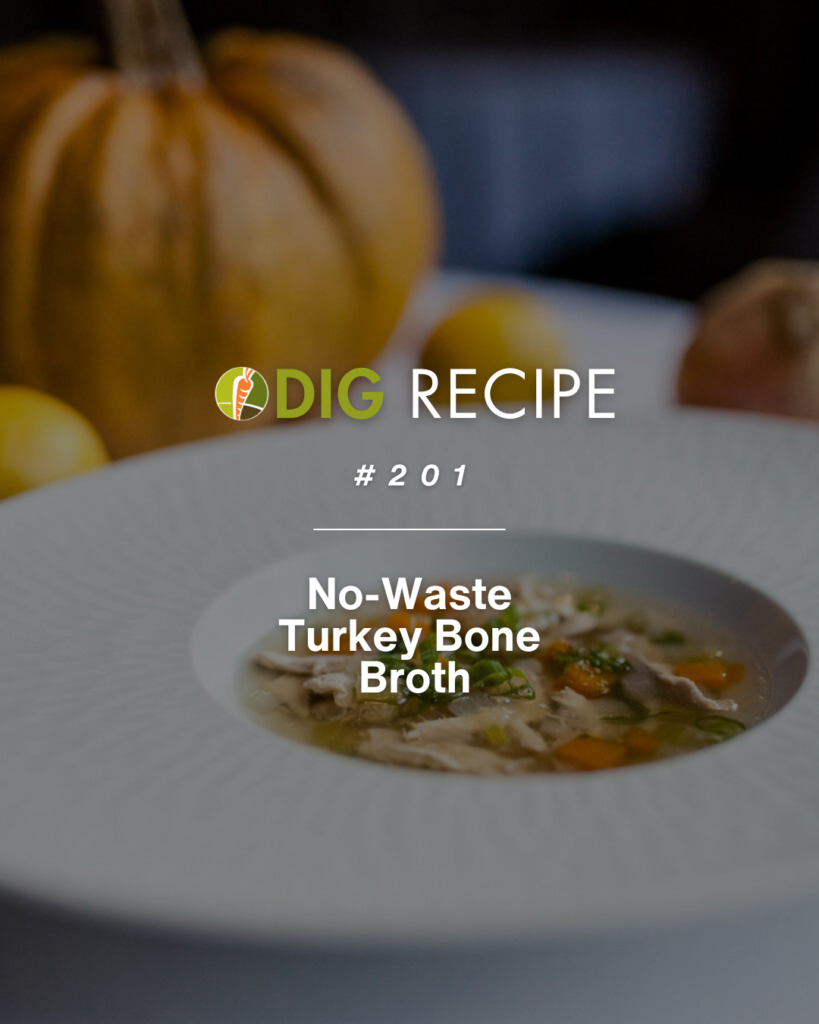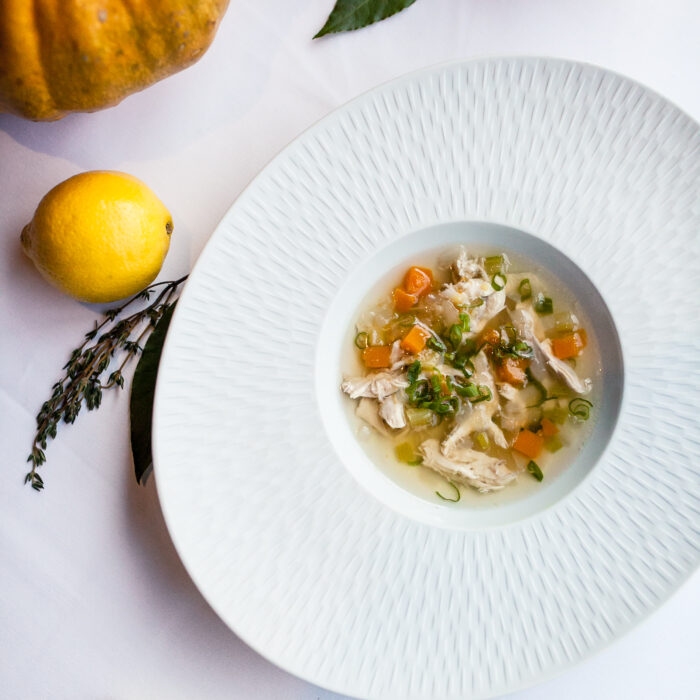
No-Waste Turkey Bone Broth
November 11, 2022
Used as a healing soup for thousands of years, bone broth is an easy way to savor the flavors of your Thanksgiving table while promoting a healthy immune system during the height of cold and flu season.

Used as a healing soup for thousands of years, bone broth is an easy way to savor the flavors of your Thanksgiving table while promoting a healthy immune system during the height of cold and flu season. Rich in calcium, magnesium, phosphorus, and other trace minerals, regularly consuming bone broth has been linked to improved gut health, immune system functioning, and joint pain relief. It’s also something you can easily make at home by converting otherwise wasted food scraps into nutrient rich flavorful broth you can keep for a long time in your freezer.
